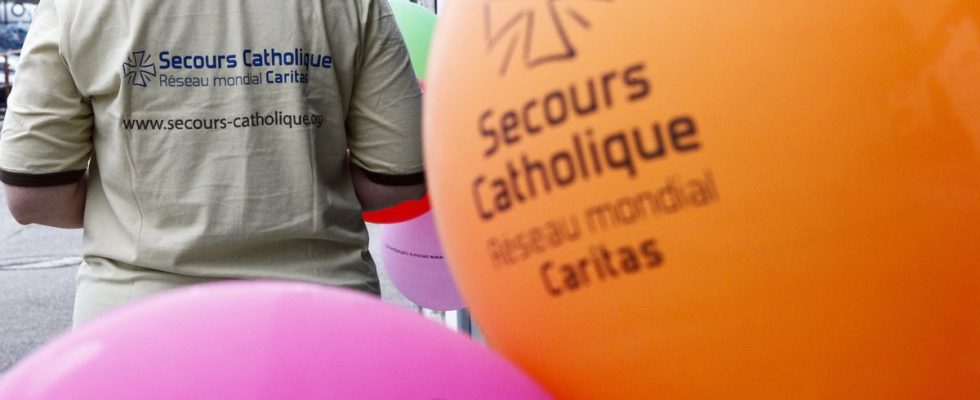Women and children first… In the spiral of poverty. Precariousness is getting worse in France, and they are the first victims, warns Secours catholique in its annual report on the subject published this Tuesday. The median income of people welcomed by the association stood at 538 euros per month in 2022, notes Secours catholique, which analyzed data from 49,250 forms filled in by its beneficiaries.
This represents a daily budget of 18 euros to meet all of the household’s needs. This amount corresponds to less than half of the poverty threshold, estimated by the association at 1,211 euros that year. Above all, taking into account inflation, which particularly affects the prices of food and energy, this represents a decline of 7.6% in income.
Increasingly “greater” deprivations
“The poorest are hit by inflation, the noose is tightening, the deprivations are greater on things not necessarily visible, such as heating or food,” comments Adélaïde Bertrand, general delegate of Secours catholique. To fight against poverty, the association recommends in particular indexing social minimums to the minimum wage, extending the RSA and fighting against non-take-up of social benefits by making social services more accessible.
In total, Secours catholique welcomed a million people to France last year, who benefited from various services, such as food aid or social support. Among these people, households made up of only one adult are over-represented (75%). These are mainly single mothers (25.7%) and single women (20.9%).
Now 57.5% women
Many of them knock on the association’s door after a separation or divorce. Indeed, women “suffer more of the weight of marital breakdowns” and “assume, too often alone, the responsibility of children”.
Women’s precariousness has steadily increased in recent decades, while poverty affected men and women equally until the early 2000s, notes Secours catholique. Women now represent 57.5% of the people met by the association, compared to 52.6% in 1999.

